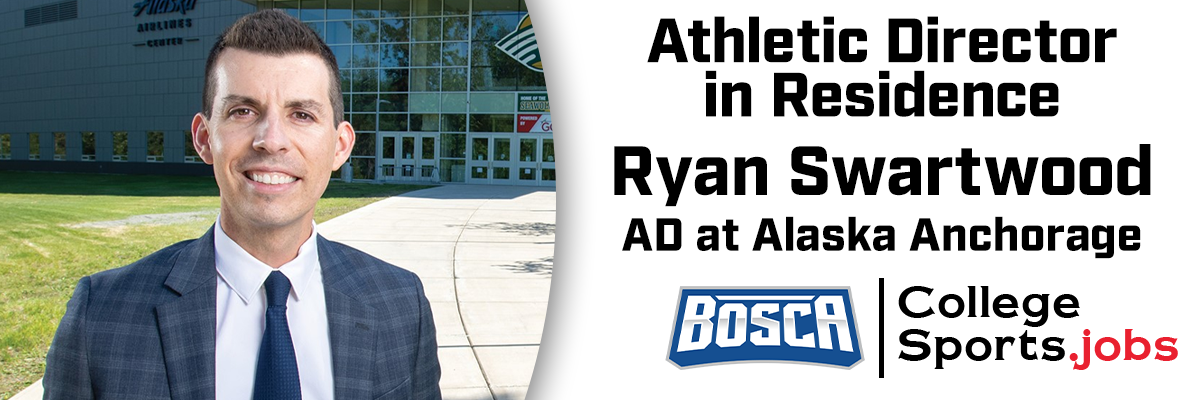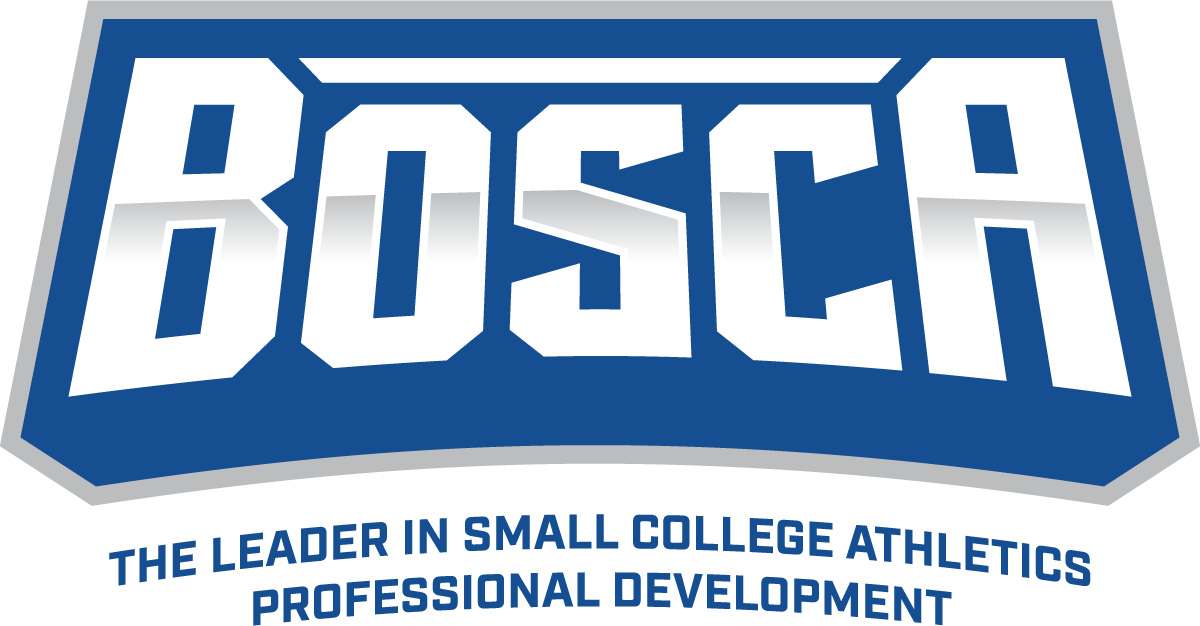AD in Residence: Alaska Anchorage AD Ryan Swartwood
Alaska Anchorage AD Ryan Swartwood shares his vision for UAA, insights as a multidisivional school, keys for extraordinary Volleyball support and more.

Recently, you broke the DII Volleyball regular season attendance record when UAA hosted Alaska Fairbanks. You also have three of the five most attended regular-season games in the history of DII. How has the volleyball program created such a dedicated fanbase? What initiatives have been tried and successful to boost fan engagement and attendance? What are some of the ways you have been intentional to expand visibility and drive fans to the sport?
Our former Head Coach (Chris Green) led the UAA Volleyball program for 15 years. Coach Green did an excellent job in developing the comprehensive program. I credit him with the inspiration and success of the first ‘Pack the House’ match in 2022.
When Coach Green resigned, his Assistant Stacie Meisner was named Head Coach. In turn, ‘Pack the House’ had become an annual event.
At UAA, we embrace comprehensive sport program administration. We pride ourselves on attention to the details. Growing up in Merced, California, I was a San Francisco 49ers fan. Hall of Fame Coach Bill Walsh wrote a book, The Score Takes Care of Itself. It includes many outstanding principles that we have tried to emulate in our program. In short, I believe the success of a program is the success of the individual interconnected component pieces.
The success of our Volleyball program has been an attractant to the university community. We are also in a good position where our programs have a dedicated following. We have a spectacular fan base and a fantastic facility; the Alaska Airlines Center is a $100 million arena with a capacity of 5,000.
For Volleyball events, we start planning and promotion of ticket sales months in advance. We work with Orange Slice Marketing Agency here in Anchorage to promote the event on radio and social media. Outreach to the youth Volleyball community is also a key component.
It has been a great feeling for our department and our community to set an attendance record once again, and planning for 2025 ‘Pack the House’ is already underway.
UAA has taken some steps to develop NIL resources for student-athletes, launching the Seawolf NIL Exchange with Teamworks Influencer and partnering with Influxer for merchandise. Why was now the right time to roll out these partnerships? What impact has NIL had so far, and what impact do you hope these partnerships will have on your student-athletes and department?
It seems as if NIL has come as a shock to many people. The Alston Supreme Court ruling in 2021 opened the door, and the NCAA in turn changed their rules and regulations.
Over the past 3 years it has been a disruptive force in the affairs of athletic programs across the country. In turn, UAA continues to find our way forward – despite the disparity across Division 1 and 2.
I feel that we are continuing to find the best way to develop a sustainable model, yet questions remain. With that said, I believe after 3 years, it is a future reality and appears a dramatically untapped opportunity across D2 Athletics.
Compared to D1 schools, at UAA our funding would seem a fraction of the larger schools/power conferences. Yet the model remains the same. We are seeking all available intelligence across the industry to determine what is most relevant in our foreseeable future. This requires an adaptive and agile mindset. Competitive-minded!
We see the Seawolf NIL Exchange and Influxer Merchandise as the foundation of a sustainable NIL program here at UAA.
As a multi-divisional school with Men’s Hockey and Women’s Gymnastics competing at the Division I level, how are you approaching all of those significant changes? Do you have plans for post-House? How are those decisions impacting how you think about supporting your Division II programs?
While we are a multi-divisional school, we don’t consider that as unusual. For many years, it has been our reality. And it has helped us develop an open-minded and adaptive mindset.
I believe there has never been a time when industry intelligence has been more important. I am fortunate to have ‘professional working relationships’ with 30 ADs and executives across the industry. Tapping into their wealth of knowledge, skills and experiences has been a tremendous learning experience.
Additionally, collaboration is a huge consideration. Sharing experiences with others is vital. Many would argue collegiality in college athletics has gone by the wayside. My experience has been quite different. Friends, colleagues and advocates in different conferences around the country have been as accessible to me as I am to them!
I am especially intrigued with the ‘logic’ of each of the 2 divisions. The Division I experience helps us with Division II, and Division II helps us with Division I. We continue to make decisions that bring the greatest good to the department.
You’ve endured significant challenges at UAA during your tenure from the passing of an AD, through the pandemic, a litany of funding challenges and state budget cuts and more. How did you lead the department through those times? On the budget cuts specifically, what learnings would you pass along to your peers who may be experiencing similar challenges?
I have learned to see problems and challenges as a normal part of life. Not to say I do not feel their effect, I just elect not to dwell on them. I feel the key is to keep moving and maintain a forward focus.
With regard to our budget, I am comfortable with my perspectives, though they may be different. My perspective is that resources are always limited, so they should be treated as special.
When I’m looking at our budget, it can appear to be a daunting process. There are so many considerations: start-up costs, continuing costs, surprise costs, one-time costs, gender equity costs, and more.
When making decisions, I am thinking of the most effective use of resources and the fulfillment of our Annual Operations Plan. I also think of efficiency. We do not have resources to waste. And time is a resource. Thinking of meeting schedules! I also think of reporting, as we are a public institution and accountable to reporting and audit. Additionally, my mind is constantly focused on sustainability, providing efficient and uninterrupted services to our constituents.
When you look to add staff members, what particular things do you have to overcome and what seems to resonate with potential candidates looking to work at UAA? How may UAA be different, from a work standpoint, than previous institutions you have worked at?
We have been fortunate to have a stable and seasoned professional staff. Perhaps my favorite example is our Senior Associate AD/SWA Dede Allen. Dede has 30 years of service at UAA and represents the heart and soul of this department.
When I consider what drew me to Alaska, it was largely a sense of adventure. Alaska is a beautiful place; our campus overlooks the Chugach Mountain Range. So if you love the outdoors, this is a destination. At the same time, Anchorage is a cosmopolitan city with fantastic amenities. And there is an international airport ten minutes from campus, as we are one of the top cargo hubs in the world.
UAA offers spectacular learning opportunities. We pride ourselves on creating a work environment that encourages self-improvement and growth in our knowledge, skills, and experiences. We also have a spectacular facility in which to work – all in the service of our wonderful student-athletes and our university community.
We certainly have a number of nuances here. We are a multi-divisional school, and our teams fly to all ‘away’ competitions.
What is your vision for UAA athletics? How do you go about determining what takes priority in building your vision for the Seawolves?
My most significant professional achievement was the opportunity to work for (and with) Chancellor Sean Parnell. Chancellor Parnell is the former governor of the State of Alaska. The Chancellor has provided me with presence and access, two things every AD in the country would hope for. Chancellor Parnell is actively engaged as a university leader, administrator, community member and fan.
Additionally, our System President Pat Pitney truly understands and embraces college athletics. She is an Olympic Gold Medalist in air rifle.
As such, my vision is very much aligned with the strategic vision of university leadership and their plans for the future of the university.
When we consider priorities for the department, we collaborate as an athletics senior staff and set our top priorities and goals for the year ahead as part of an Annual Operations Plan.
We track our progress and achievements on those priorities and goals on a regular basis, including our weekly senior staff meetings. This keeps priorities and goals front of mind.

